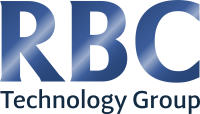Benefits of Accounts Payable Automation
Accounts Payable is intuitively considered to be the complete opposite of sales. After all, AP is all about outgoing cash flow – the opposite of sales revenue. Enterprises that turn this thinking on its head have the capability to add to the bottom line. Simply put, inefficient AP is like throwing money away. Enterprises should be treating AP as a process from which they can remove this cost from bottom line with a little process husbandry. Whether you consider it to be cost savings or increased productivity, the end result is enhanced profitability.
Historically, enterprises have preferred to conserve cash reserves by delaying payment for as long as possible. In schoolyard terms, this was the equivalent of bullying. It worked mainly where the buyer was bigger than the seller. But the old adage that honey attracts more flies than vinegar can be adapted to the AP scenario. It is a relatively new paradigm, especially in an economic climate where money (borrowing) is cheap. Offer your supplier attractive (quick) payment terms in exchange for reduced prices (discount) and add the savings directly to your bottom line.
Suppliers have always offered some discount for faster payment terms but now enterprises with efficient AP departments are using this device proactively by way of Dynamic Discounts. The catch for inefficient organisations is that the buyer’s approval process often takes so long to complete that this opportunity is long gone by the time the final approver signs off the purchase invoice.
However, whatever an enterprise’s approach to maximising benefits of efficient payables, the amounts must be correct to begin with. Shortcuts in the approvals process lead to errors, disputes and negative impacts that knock-on to other processes and to smooth supplier management.
Best practice points to analysing the AP process first, improving it where possible, and then considering automating the improved workflow. That first step is vital. Speeding up a poor process without investing in rationalising it will prove counterproductive in the long term and will lose many benefits and savings of automation.
With the majority of invoices still handled in a manual paper format. It is difficult to persuade suppliers to make an exception to their process just to suit your system without worthwhile incentives. The next best thing is to immediately convert all paper invoices into scanned electronic format at point of receipt. This is the first step to create efficiencies in your AP process.
What Does AP Process Automation Do?
- Removes the manual progression required to put each invoice in front of each approver in turn.
- Allows for real time overview and analytics of the entire AP process.
- This visibility reduces time/cost spent in servicing queries from suppliers and management.
- Greatly reduces the cost of each invoice, from as much as $11.40 to as little as $2.85.
- Fast approval chain reduces the ready-to-pay cycle from an average of 20 days to 4 days.
- That speed is the enabler for harnessing discounts and other benefits.
- Assists with cashflow projection and provides instant snapshot insights.
- Tracks performance of your process and helps you identify improvement opportunities.
Do not overlook the human factor. Small suppliers, especially, may turn somersaults for customers who deliver speedy payment. Benefits can go beyond mere dollar savings with special treatment such as free overnight delivery, regular prioritisation in all manner of ways, and frequent small “favours” that cannot be bought.
The key to unlocking these profitable approaches is accuracy, speed and can only be achieved only through process automation.
















